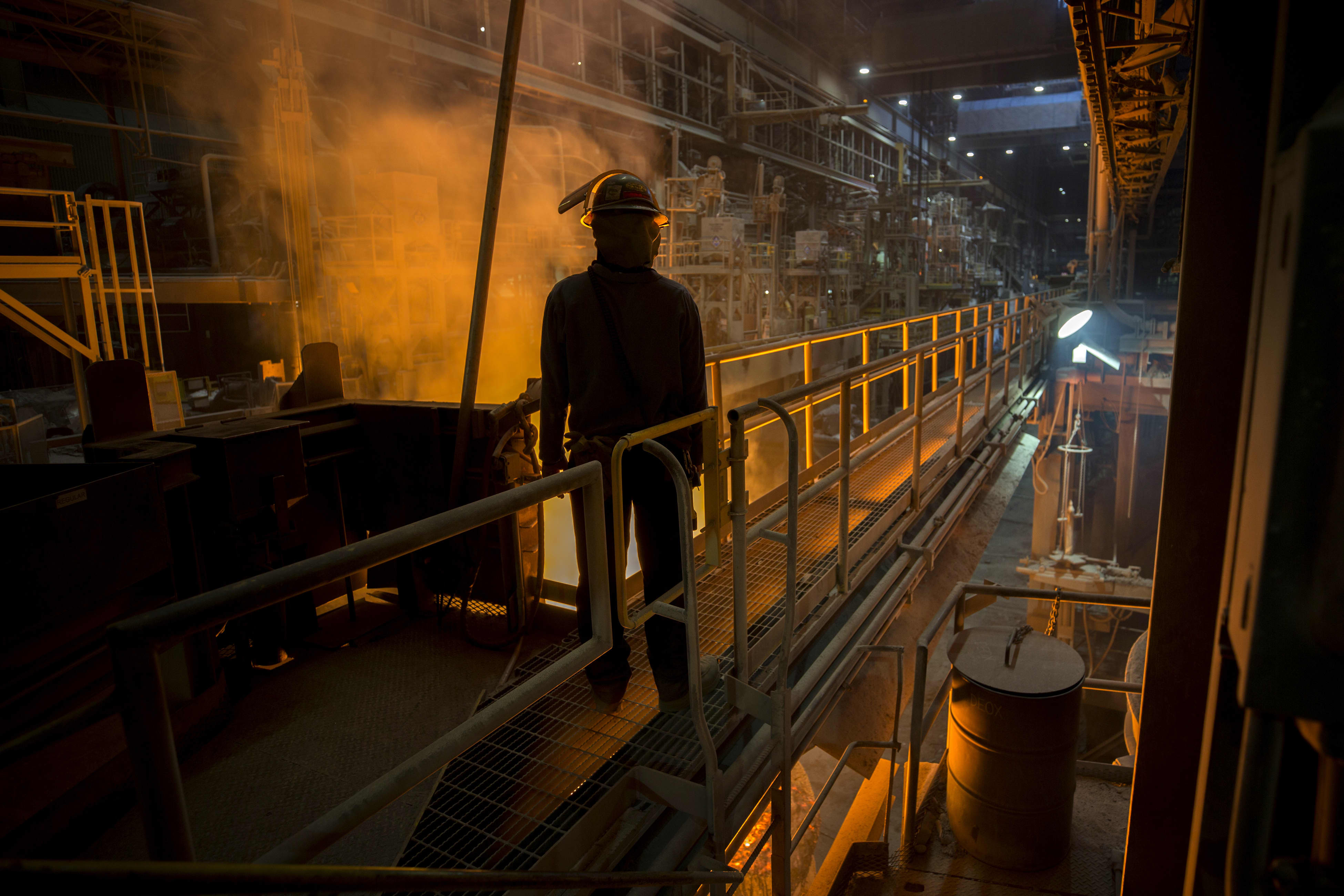A melting supervisor monitors a bucket of molten steel at the Nucor Steel plant in Huger, S.C., April 17, 2017.
Stephen B. Morton | The New York Times
The steel industry has a massive carbon footprint, as much as 6% to 7% of the world’s greenhouse gas emissions, according to a Rocky Mountain Institute study. A new Nucor steel microplant in Missouri is trying to put a dent in that number.
Nucor’s micromill in Sedalia, Missouri, is set to be the first U.S. steel plant to run on wind energy, according to Evergy. The $250 million plant, which is expected to open by the end of the year, is a partnership between the steel company and local utility Evergy, which will power the plant after a 75 megawatt power purchase agreement between the companies.
With sustainability goals becoming increasingly important to companies, plants like this one could be built more frequently, and Evergy senior vice president Chuck Caisley says that the Midwest is in a prime position for more projects like the Nucor plant.
“We sit in the Saudi Arabia of wind,” Caisley said. “I think that increasingly there will be sustainability requirements companies will want to meet. In Kansas and midwest Missouri we have great wind to meet current and prospective customers with price competitiveness and sustainability. It reduces our environmental footprint in the area and creates jobs.”
The Nucor plant was not initially conceived with a goal of using wind energy, but the Evergy executive said a competitive price ended up attracting the steel-producing company to Missouri over other wind-rich states, like Nebraska and Kansas, who were finalists for the project. Caisley said that the price competitiveness, along with helping Nucor meet sustainability goals, were important to get the project to Missouri. There is a law in the state that lets utilities apply for discounted electric rates for aluminum and steel producers that buy significant amounts of energy.
In an email, Nucor said they are constantly looking for ways to increase their energy efficiency to decrease their environmental impact and that they are pleased that their power provider in Missouri is developing wind resources that can be part of the electric grid serving their new rebar micromill.
Evergy is currently working with other potential clients to bring other manufacturing companies to the Midwest in the coming years, making its pitch based on price and access to renewable wind energy to meet sustainability goals.
The Nucor plant will employ around 250 people and will use energy produced by Evergy, including from a new wind farm, to power electric arc furnaces that will melt scrapped steel and turn it into new, recycled steel.
We sit in the Saudi Arabia of wind. … In Kansas and midwest Missouri we have great wind to meet current and prospective customers with price competitiveness and sustainability.
Chuck Caisley
senior vice president, Evergy
Jessica Craig, executive director of economic development for Sedalia-Pettis County, told CNBC that the construction of the plant already has brought in 500 construction jobs over the last 18 months, and the plant will be crucial to the economic development of the community.
This opportunity has been transformative for our community,” Craig said. “People had to move out of state for the jobs Nucor is offering. Now those people can stay in the community.”
Entry-level jobs at the plant will offer $65,000-a-year wages. Craig said that the normal starting wage in the area is $35,000 to $40,000 a year.
First solar-powered steel plant
The Sedalia plant isn’t the only steel operation in the U.S. planning to be powered by renewable energy.
Xcel Energy reached an agreement in late September with Lightsource BP, which is Europe’s largest solar developer and is half owned by the British oil giant and steelmaker EVRAZ North America, to develop a $250 million, 240MW solar power facility in Pueblo, Colorado, that will power the EVRAZ Rocky Mountain Steel facility. The EVRAZ plant will be the largest on-site solar plant in the country dedicated to a single customer when it comes online in 2021, according to the company.
Xcel, which has been among the most aggressive U.S. utilities in its renewable energy goals, had decided to close two coal plants in the area, which threatened the steel facility’s viability based on need for low-cost electricity. EVRAZ produces steel for rail, pipes and wire rod, and the facility has existed since the 1800s.
Thomas Koch Blank, senior principal at Rocky Mountain Institute, says that while these recycling plants powered by renewable energy are certainly a good development, much more needs to be done.
A RMI study cited that there isn’t enough scrap steel to provide the global economy with its steel needs.
United States Steel announced a goal in November to reduce global greenhouse gas emissions by 20% by the year 2030. Additionally, the Worldsteel Association, which represents more than 80% of global steel production, launched the Step Up program in an effort to transition to a carbon-neutral steel economy. It includes switching to hydrogen containing fuels.
Blank said sustainable technologies like hydrogen-based steelmaking would make a larger dent in the carbon emissions produced by the steel industry.
“In the end, that’s the big prize here,” Blank said. “If we can’t decarbonize steelmaking, you’re still going to have 5% of carbon emissions coming from steel.”
